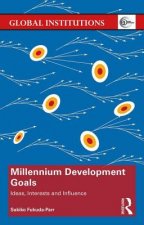
Kód: 15196207
Greenhouse-Impact on Cold-Climate
Autor M. Boer, E. Koster
Climatic change and sea level rise, which are thought to result from the enhanced greenhouse forcing of the steadily increasing concentrations of atmospheric carbon dioxide and other so-called greenhouses gases such as methane (CH ... celý popis
- Jazyk:
 Angličtina
Angličtina - Vazba: Pevná
- Počet stran: 151
Nakladatelství: Schweizerbart'sche Verlagsbuchhandlung, 1992
- Více informací o knize

1606 Kč
Dostupnost:
50 % šance Máme informaci, že by titul mohl být dostupný. Na základě vaší objednávky se ho pokusíme do 6 týdnů zajistit.
Máme informaci, že by titul mohl být dostupný. Na základě vaší objednávky se ho pokusíme do 6 týdnů zajistit.Prohledáme celý svět
Mohlo by se vám také líbit
-

Millennium Development Goals
1467 Kč -

Men's Rights, Gender, and Social Media
3473 Kč -

Hundert Jahre (1770-1870)
1615 Kč -

Thrombose nach Versuchen und Leichenbefunden
645 Kč -

El bandolerismo morisco valenciano
669 Kč -

Drugaya zhizn'
1104 Kč -

Robert Schumann's Leben
1746 Kč
Darujte tuto knihu ještě dnes
- Objednejte knihu a zvolte Zaslat jako dárek.
- Obratem obdržíte darovací poukaz na knihu, který můžete ihned předat obdarovanému.
- Knihu zašleme na adresu obdarovaného, o nic se nestaráte.
Informovat o naskladnění knihy
Zadejte do formuláře e-mailovou adresu a jakmile knihu naskladníme, zašleme vám o tom zprávu. Pohlídáme vše za vás.
Více informací o knize Greenhouse-Impact on Cold-Climate
Nákupem získáte 161 bodů
 Anotace knihy
Anotace knihy
Climatic change and sea level rise, which are thought to result from the enhanced greenhouse forcing of the steadily increasing concentrations of atmospheric carbon dioxide and other so-called greenhouses gases such as methane (CH4), nitrous oxide (N20) and chlorofluorocarbons (CFC's) has become a topic of major scientific and political concern. The global dimension of the problem and the potentially hazardous implications are leading to calls for a large research effort to quantify the nature, magnitude and rate of climate change and sea level rise, the impact on the natural environment and society, as well as the feedbacks to the global climate system. Outlines for this research effort have been formulated, amongst others, by the International Geosphere-Biosphere Programme (1GBP 1990) of the International Council of Scientific Unions (ICSU). The WMO/UNEP Intergovernmental Panel on Climate Change (IPCC) recently predicted a rate of increase of global mean temperature during the next century of 0.1 to 0.3°C per decade with an uncertainty range of 0.2 to 0.5°C per decade (HOUGHTON et al. 1990). Changes in all climate variables (e.g. winds, precipitation, evaporation) will occur in parallel with this global-mean warming although varying substantially from region to region and from season to season (HULME et al. 1990). Current climate scenarios show that large latitudinal differences are likely to occur, which have the feature of a smaller temperature increase of half the global mean in the tropical regions and a larger increase of twice the global mean in high-latitude regions (Houghton et al. 1990). Changes in mean annual temperatures of a comparable magnitude, and sometimes even of a similar rate of change (e.g. during the Younger Dryas Period, ± 11000-10000 BP), as those envisaged to result from a doubled greenhouse forcing of the atmosphere, have occurred in the past (Berger & Labeyrie 1985) and may serve as analogues for future changes. From paleoclimatic and paleo-environmental constructions we know that the major changes in the geological past and the minor deviations since historical times (e.g. Climate Optimum of the Middle ages, Little Ice age), have caused significant alteration in the spatial distribution of plant and animal species (e.g. Huntley & Birks 1983, Birks 1990), in the frequency and intensity of geomorphological processes (e.g. Derbyshire 1976), and in land use (e.g. Parry et al. 1988). A number of recent experiments, in which present climate - life zone relationships have been extrapolated towards the warmer, hypothetical high-C02 situation, have shown a large 'mismatch' between the present distribution of vegetation types or life zones and the future bioclimatic zonation (e.g. Emanuel et al. 1985, Rizzo & Wiken 1989, Ozenda & Borel 1990). Global climate warming of several degrees Celcius over a time span of several decades to a century may thus be expected to have a pronounced impact on the structure and functioning of terrestrial ecosystems and landscapes.
 Parametry knihy
Parametry knihy
1606 Kč
- Plný název: Greenhouse-Impact on Cold-Climate
- Podnázev: Ecosystems and Landscapes Selected papers of the European Conference on Landscape Ecological Impact of Climatic Change, Lunteren, The Netherlands, December 3-7, 1989
- Autor: M. Boer, E. Koster
- Jazyk:
 Angličtina
Angličtina - Vazba: Pevná
- Počet stran: 151
- EAN: 9783510653638
- ID: 15196207
- Nakladatelství: Schweizerbart'sche Verlagsbuchhandlung
- Hmotnost: 470 g
- Rozměry: 240 × 170 × 12 mm
- Rok vydání: 1992
Oblíbené z jiného soudku
-

Berserk Deluxe Volume 1
1033 Kč -

Haunting Adeline
617 Kč -

Berserk Deluxe Volume 2
1056 Kč -

Berserk Deluxe Volume 3
1138 Kč -

LEGO Star Wars Visual Dictionary Updated Edition
534 Kč -

Atomic Habits
340 Kč -

White Nights
90 Kč -

Powerless
276 Kč -

Harry Potter and the Prisoner of Azkaban (Minalima Edition)
978 Kč -

Berserk Deluxe Volume 5
1115 Kč -

Chainsaw Man, Vol. 15
251 Kč -

House of Leaves
405 Kč -

Hunting Adeline
633 Kč -

Iron Flame
353 Kč -

Cry Baby Coloring Book
270 Kč -

JUJUTSU KAISEN V22
241 Kč -

The Official Stardew Valley Cookbook
607 Kč -

Gravity Falls Journal 3
427 Kč -

The 48 Laws of Power
523 Kč -

Dune Messiah
178 Kč -

Heaven Official's Blessing: Tian Guan Ci Fu (Novel) Vol. 2
442 Kč -

Surrounded by Idiots
256 Kč -

Twisted Love
258 Kč -

Berserk Deluxe Volume 4
1165 Kč -

Dune
254 Kč -

Twisted Lies
276 Kč -

Berserk Deluxe Volume 6
1086 Kč -

Heaven Official's Blessing: Tian Guan Ci Fu (Novel) Vol. 1
357 Kč -

Bungo Stray Dogs, Vol. 8 (light novel)
387 Kč -

Twisted Games
276 Kč -

Fourth Wing
214 Kč -

A Little Life
258 Kč -

King of Sloth
276 Kč -

CHAINSAW MAN V14
248 Kč -

Berserk Deluxe Volume 10
1163 Kč -

The Husky and His White Cat Shizun: Erha He Ta de Bai Mao Shizun (Novel) Vol. 5
373 Kč -

Court of Thorns and Roses Paperback Box Set (5 books)
1113 Kč -

Court of Mist and Fury
254 Kč -

Court of Thorns and Roses
218 Kč -

48 Laws Of Power
372 Kč -

Raising Mentally Strong Kids: How to Combine the Power of Neuroscience with Love and Logic to Grow Confident, Kind, Responsible, and Resilient Child
593 Kč -

Vagabond (VIZBIG Edition), Vol. 1
641 Kč -

Heaven Official's Blessing: Tian Guan Ci Fu Vol. 4
441 Kč -

Twisted Series 4-Book Boxed Set
1064 Kč -

No Longer Human
330 Kč -

Powerful
249 Kč -

A Court of Silver Flames
276 Kč -

Throne of Glass Box Set (Paperback)
2146 Kč -

Dead Poets Society
209 Kč
Osobní odběr Praha, Brno a 12903 dalších
Copyright ©2008-24 nejlevnejsi-knihy.cz Všechna práva vyhrazenaSoukromíCookies


 Vrácení do měsíce
Vrácení do měsíce 571 999 099 (8-15.30h)
571 999 099 (8-15.30h)